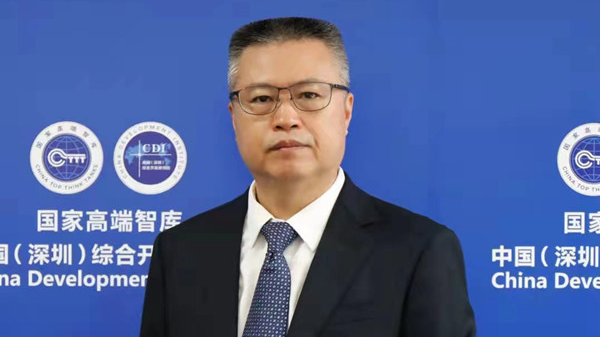Guo Wanda, Executive Vice President of China Development Institute (CDI), pays close attention to the overall plan for Nansha District in Guangdong's provincial capital Guangzhou to deepen comprehensive cooperation between Guangdong, Hong Kong and Macao, saying, “Nansha is positioned high as a‘major strategic platform’ for GBA integration and global cooperation.”

Guo Wanda, Executive Vice President of China Development Institute (CDI)
The Plan released by China’s State Council recently sets out 5 key directions for Nansha including high-level opening-up, rule-based connection mechanism, cooperation for sci-tech innovation, co-operation in youth innovation and entrepreneurship, and high-quality urban development. From 2022 to 2024, 10 billion RMB of new local government debt will be allocated to Nansha every year.
“The plan for Nansha might involve similar advantageous measures as the Plans for Hengqin and Qianhai, which makes sense considering the effective practice in the two cooperation zones. However, I would highlight Nansha has its unique industrial clusters that focus heavily on high technology,” said Guo,
According to the Nansha government, 744 high-tech enterprises and more than 620 AI and bio-tech companies have settled in the district. The auto industry is the pillar industry to drive development with an annual output of more than 154.8 billion RMB in 2021. Nansha is also one of the two districts in Guangzhou that have given a green light to launch automatic driving on the pilot roads and areas.
“Nansha not only could be the manufacturing base for high-tech industries, but also provides an relatively open environment to apply these technologies such as unmanned vehicles, aircraft and underwater vehicles. It could facilitate the development of upstream industries such as new material and marine energy as well.”
Moreover, Guo considers Nansha’s development is highly related to the ability of technological innovation. The Hong Kong University of Science and Technology set up its Guangzhou campus in Nansha and will open in September this year while the Chinese Academy of Sciences (CAS) has landed a number of research institutes in the districts.
“When I visited Nansha, I was deeply impressed by the cold-seep seafloor ecosystem research device being built by the South China Sea Institute of Oceanology, CAS. Cold seeps are located at the sea floor where hydrocarbon-rich fluid seepage occurs. A deeper research into the cold seeps will reveal the secrets of the evolution of life on Earth, and contribute to research on energy and bio-technology,” he said excitingly.
Now that the plan positions Nansha as a strategic platform for global cooperation, Guo was invited by Nansha to research on more detailed strategies to develop the district into an international platform.
In his opinion, regulations up to international standards are fundamental to attract global players. “For example, our medical system is different from other countries. We need to press international standards on medical institutes, drug and medical equipment manufacturers. Or if we plan to involve Hong Kong, Macao counterparts in urban development, more reform is required to recognize their different certificates and standards in the professional services sector.”
Author: Jasmine
Editor: Wing, Keane, Steven, Jerry
















